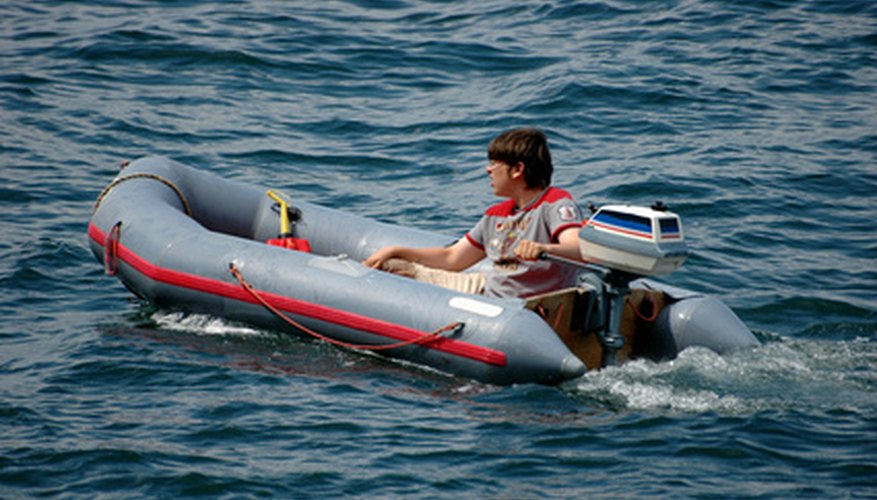Every engine needs a cooling system to eliminate engine heat. Left to their own devices, engines would otherwise destroy themselves. The main differences between air-cooled and water-cooled outboard engines are how they work and maintenance issues.
Air-cooled Outboards
Air-cooled outboard engines dissipate engine heat using a system of cooling fins and deflector plates. As air passes over the engine, heat is whisked away. Air-cooled outboard engines are not remarkably efficient and risk overheating. They are typically limited to small horse-powered outboard engines.
- Air-cooled outboard engines dissipate engine heat using a system of cooling fins and deflector plates.
Water-cooled Outboards
There are two main types of water-cooled outboard engines. A fresh water (“closed”) cooling system uses fresh water or coolant to cool the engine. Salt water loops through this closed system, but is prohibited from contacting the engine. The role of the salt water is solely to absorb engine heat from the coolant in a “heat exchange” unit, which keeps the fresh water cool. The second type of water-cooled outboard engines is a “raw water” system in which the surrounding ocean or lake water is pumped directly through the engine to achieve a cooling effect.
- There are two main types of water-cooled outboard engines.
- A fresh water (“closed”) cooling system uses fresh water or coolant to cool the engine.
Maintenance Differences
Air-cooled outboards generally remain healthy as long as you routinely remove dirt from between the cooling fins. Dirt that sticks to oily residues on the engine block act as insulation, thus obstructing the cooling action of the fins. Water-cooled outboards commonly suffer from clogged pumps and rusted parts. You should replace pump impellers every two years, if not earlier. According to boat part experts at Boat Part Store, faulty impellers are reported to be the culprit of approximately 95 per cent of overheating situations.
- Air-cooled outboards generally remain healthy as long as you routinely remove dirt from between the cooling fins.
- Dirt that sticks to oily residues on the engine block act as insulation, thus obstructing the cooling action of the fins.
